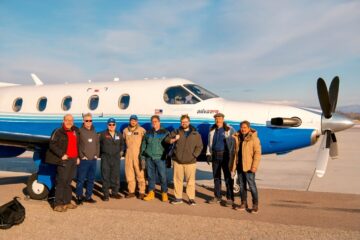Leesburg, Va. – Mosaic ATM, a leading innovator in unmanned aircraft system (UAS) technology, is excited to announce the successful field evaluation of its Drone ID prototype system, developed under a NASA Small Business Innovation Research (SBIR) program. This cutting-edge technology underwent rigorous testing at the Aerial Ignition Academy, showcasing its potential to revolutionize communication and safety in the airspace through Remote Identification (RID) capabilities.
The prototype, designed for enhanced operational efficiency and safety, features a Long Range Bluetooth (LRB) transmitter, an LRB receiver, and a tablet display, all powered by an onboard battery. The system demonstrated an impressive operational range of 7 nautical miles with a clear line of sight, enabling reliable RID data transmission captured by the LRB receiver to the tablet display via Wi-Fi.


Beyond mere positional data, the drone ID tablet display is equipped with additional features aimed at improving airspace safety. Though not evaluated during this test, these capabilities include a sophisticated detection and avoidance algorithm. This algorithm provides critical advisory information to flight crews, facilitating a better understanding of the spatial relationship between their crewed aircraft and UAS in the vicinity.
For this field evaluation, the LRB transmitter was mounted on an Alta-X drone using Velcro tape and a secondary zip-tie strap for additional security, ensuring unimpeded access to the drone’s components. Preliminary procedures included attaching the LRB transmitter, powering it on, and conducting a series of compass calibrations to ensure the drone’s optimal operation.


Comprehensive data and video recordings captured during the evaluation demonstrate the prototype’s effectiveness in conveying the drone’s position relative to the receiver, along with showcasing the potential of the yet-to-be-evaluated detection and avoidance features.
Mosaic ATM is proud to contribute to the advancement of UAS technology and airspace safety through this collaboration with NASA. The company remains committed to ongoing research and development, aiming to introduce innovative solutions that meet the evolving needs of the aerospace industry.


